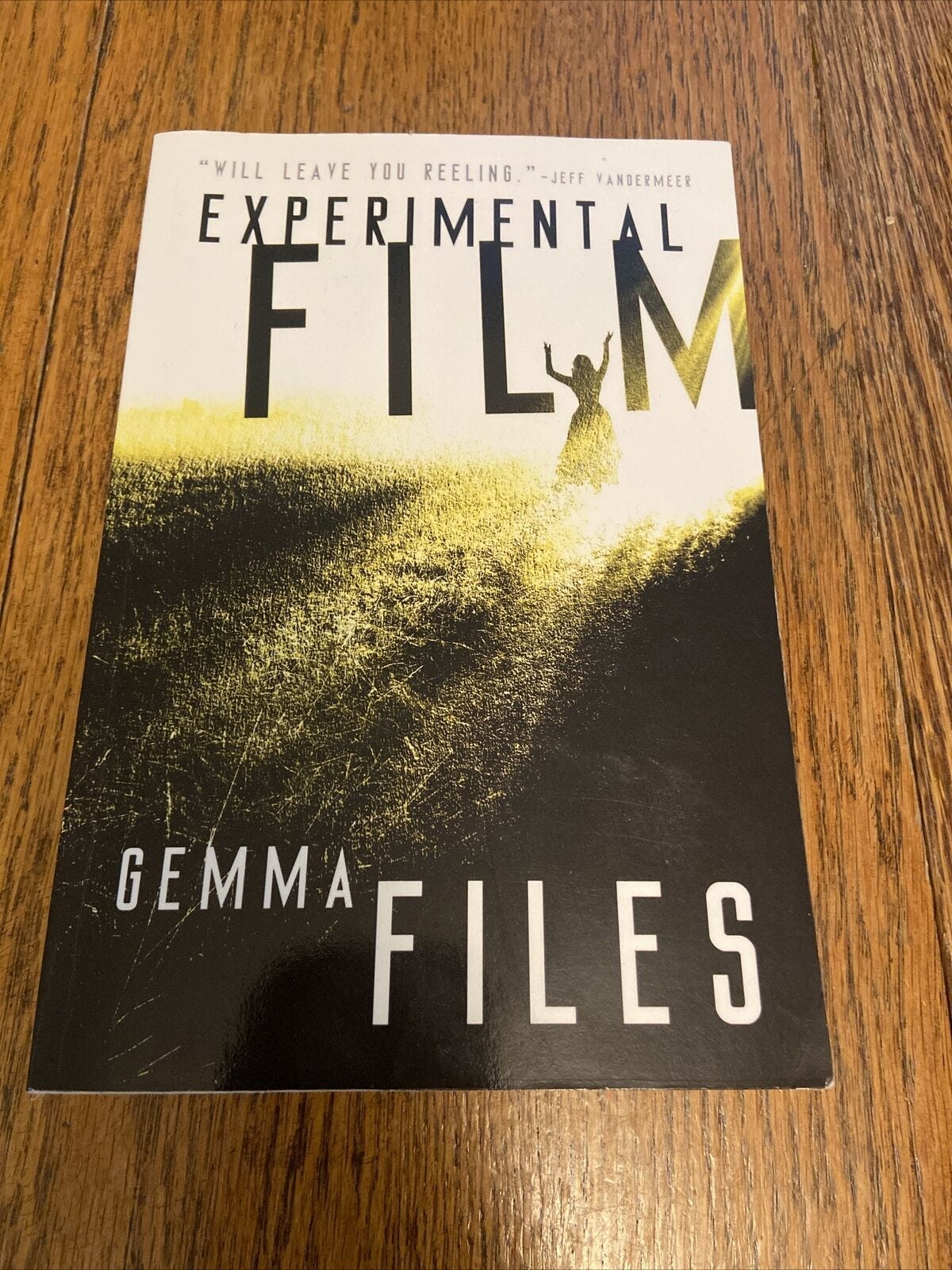If you don’t know her, you should.
Gemma Files is a film critic, teacher, and award winning Canadian horror writer. Her book, Experimental Film, chronicles the journey of Lois Cairns, a film history teacher at the end of her rope. After her son’s autism diagnosis and the loss of her job, she feels listless. Until she stumbles upon a piece of rare footage.
Mrs. A. Macalla Whitcomb was an Ontario filmmaker at the turn of the century. But Lois Carins believes she is Canada’s first female filmmaker. On a search to prove that the woman who mysteriously disappeared is a vital part of Canada’s film history, Lois uncovers more than she bargained for.
Mrs. Whitcomb’s life has some startling similarities to Lois, and as their obsessions begin to overlap, Lois’ life starts to fall apart. Despite warnings from a spirit to stop her search, Lois presses on to find out the truth. Her search leads her to a ghost on film, an ancient demon who dwells in the light, and won’t accept anything less than worship.
The Horror Tropes.
This story is a great example of using horror tropes in a new way. It’s a ghost story, but one that centers around film and light. It’s a found footage story, but one uniquely told from the perspective of a film expert. It’s a story about love and family, one of my favorite aspects of horror when it’s done well.
Lois is drained caring for her son Clark. Some of my favorite chapters detail the real life struggle of giving up so much of yourself to ensure someone you love is taken care of. As much as the story unravels her obsession and a glimpse of a woman from the past, it unravels her deep, unfailing love for her son and husband.
The Scare Factor.
I have to admit, this wasn’t a scary book to me, but I’ll caveat that with the reality that I’ve read review after review that puts this in the top 10 scariest stories for many readers. So while it didn’t do it for me, it might do it for you.
What I did love is the pacing. This isn’t in your face horror. It’s the quiet growing sense of dread. Strange coincidence and passing shadows in the corner of your eye. The story builds and builds until we are face to face with a midday demon who will stop at nothing to have what she wants.
On Autism and Aspergers.
The main character’s son, Clark, is autistic, and Lois herself has Aspergers. In real life, Gemma Files is a mother to a son with autism, so some of her portrayals in the story are personal. Her own son spoke exclusively in echolalia, which is when a person seizes on a noise or phrase heard in movies, songs, or from others.
In the book, Clark speaks almost entirely from films he has seen, a fitting characteristic for the story that centers so closely around filmography and film history. But this is something that Files herself has experienced firsthand. Her son spoke exclusively in language from commercials, movies, and even books he read. In this interview with the This Is Horror podcast, she details that her son, now 13 years old, uses the phrase “That’s Right Millie” to indicate yes.
I personally found this to be such an incredibly interesting fact. I had never heard of echolalia, and the book shows the struggle for Clark to communicate in what amounts to his own language, while also showing how difficult it can be for Lois to interpret. As a mother, I appreciated the glimpse into some of the darker sides of parenting. The difficulties, the emotional rollercoaster, the pure love that drives you on. It was incredibly captivating. (Pet Semetary has some of this same flavor as well.)
The Monster.
The demon that Lois comes face to face with is one from legend, specifically Wendish mythology. I am totally unfamiliar with any Slavic legends, so this book has introduced me to more than just a made up monster. Lady Midday, as the book calls her, is part of legends that existed in Germany and Eastern Europe before Christianity spread there.
She is the personification of sunstroke, a spirit called by a name that means “lady of the rye” who makes children disappear if they go searching for flowers in grain fields on a hot summer day. She would roam the fields, searching for people who trampled her grain, and put them to sleep with a whisper. It would cause headache, paralysis and lower back pain. Sometimes she would break limbs. To avoid her wrath, children had to stay away from valuable crops and workers had to take a break at midday.
Bringing legend into modern context is one of my favorite devices in story. The Wendigo in Pet Semetary, the host of forgotten deities in American Gods, there’s something about it that works so well. I also find it terrifying to think that there are powerful beings in need of worship seeking to insert themselves in the modern day, no matter the cost for humans.
If you like fantasy, if you like horror, then this book is for you.






Nice review! It sounds like such a multilayered book. I'm a sucker for anything that's able to incorporate mythology or folklore into the story--preferably something obscure. Most of the things we take for granted as having scientific or medical basis used to be attributed to mysterious and often malicious spiritual agents. The lore surrounding their causes, preventions, and consequences is fascinating in its own right, but also makes great fodder for stories.
Never heard of this story. Thanks for the great review.